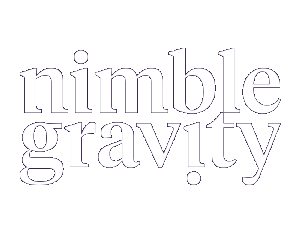Digital transformation has long been a business priority, yet too often it is treated as a one-time initiative. Companies launch major projects to update infrastructure, migrate to the cloud, or adopt new digital tools. While these projects deliver short-term improvements, they rarely deliver long-term resilience. True transformation is not a destination but an ongoing journey.
Organizations that thrive in today’s competitive environment approach digital transformation as a continuous process. They embed adaptability into their operations, making change an integral part of how they work. This shift from one-off projects to continuous evolution defines the new playbook for success.
Why One-Off Projects Fall Short
Large-scale transformation projects often deliver impressive results at launch, but the benefits can fade quickly. Technology advances rapidly, customer expectations shift, and new competitors emerge. A solution that feels modern today may feel outdated within a few years.
The shortcomings of one-off projects include:
- Limited Scope: Projects tend to focus on specific areas, leaving gaps across the broader organization.
- Cultural Resistance: Employees may revert to old habits once a project ends, reducing long-term impact.
- Static Design: Projects are designed for current conditions but rarely account for future shifts.
- High Costs without Sustainability: Significant investments can lose value if not paired with ongoing innovation.
Without mechanisms for continuous improvement, digital initiatives risk becoming temporary upgrades rather than strategic advantages.
Defining Continuous Digital Transformation
Continuous digital transformation is a mindset and an operating model. Instead of approaching transformation as a series of disconnected initiatives, organizations treat it as a constant cycle of assessment, experimentation, and refinement.
The key features include:
- Ongoing Adaptability: Systems and processes are designed to evolve with changing conditions.
- Integration Across Departments: Transformation becomes part of the entire organization, not just an IT-driven project.
- Customer-centric Focus: Feedback from customers drives the prioritization of new tools and processes.
- Culture of Innovation: Employees are encouraged to embrace change, experiment, and share ideas.
This approach ensures that digital transformation is never complete. It becomes part of the DNA of the organization.
A Real Example of Continuous Transformation in Action
One of Nimble Gravity’s long-term partnerships demonstrates how transformation becomes sustainable when it’s treated as an ongoing evolution instead of a one-off effort.
The client, a fast-growing organization expanding through multiple acquisitions, initially engaged us to create a centralized data lake to unify operations across dozens of divisions. But the work quickly evolved beyond a data infrastructure project. Together, we initiated an enterprise-wide transformation that included developing new processes and tools to support contract renewals, cost estimation, and customer engagement.
By helping the organization standardize how each division estimated contract costs, engaged customers earlier, and transitioned to annual paid-in-advance agreements, we built a scalable model designed to grow with the business. Once implemented across all divisions, this new system is projected to unlock roughly $25 million in additional revenue.
What began as a technical initiative became a cultural and operational shift. The foundation built through this collaboration now supports future initiatives, reinforcing the principle that transformation is not a moment in time, but a continuous journey.
Building Blocks of the Playbook
For continuous digital transformation to succeed, companies need clear strategies and structures. The playbook often includes these building blocks:
Agile Operating Models
Agile frameworks allow organizations to adapt quickly to feedback and evolving conditions. Iterative cycles ensure that transformation efforts remain aligned with real business needs.
Cloud-first Infrastructure
Cloud platforms provide the scalability and flexibility required for constant innovation. They make it easier to deploy new solutions, integrate data sources, and experiment with emerging technologies.
Data-driven Decision-making
Continuous transformation depends on insights. Organizations must collect, analyze, and act on data in near real time to identify opportunities for improvement.
Cross-functional Collaboration
Successful transformation requires contributions from across the organization. Cross-functional teams prevent silos and ensure that digital initiatives align with both technical and business goals.
Governance and Accountability
Structures for oversight help balance speed with control. Clear metrics and accountability ensure that transformation is not only continuous but also effective.
These building blocks turn transformation from a series of temporary efforts into a sustainable cycle of renewal.
Benefits of Continuous Transformation
Shifting to a continuous model delivers meaningful advantages:
- Resilience: Organizations are better prepared to handle disruptions, whether from technology changes or market shifts.
- Sustained Relevance: Continuous updates ensure that offerings stay aligned with customer expectations.
- Cost Efficiency: Instead of large, infrequent projects, companies spread investments over time, reducing waste and avoiding massive catch-up initiatives.
- Employee Engagement: A culture of innovation empowers teams and prevents stagnation.
- Competitive Advantage: Continuous transformation allows organizations to outpace rivals stuck in cyclical project-based approaches.
The benefits extend beyond technology. They reshape how the entire organization thinks about progress.
From Projects to a Living Strategy
The playbook for continuous digital transformation does not abandon the idea of projects altogether. Projects still serve as important milestones. What changes is the mindset. Instead of treating transformation as something that starts and ends, organizations weave it into the fabric of everyday operations.
This requires strong leadership, investment in infrastructure, and a willingness to embrace cultural change. It also requires viewing transformation as a living strategy. Just as products and services evolve, so too must the systems and processes that support them.
By evolving beyond one-off projects, organizations position themselves for lasting success. Digital transformation becomes more than a checklist item. It becomes a way of working that ensures resilience, adaptability, and relevance in an unpredictable world.




